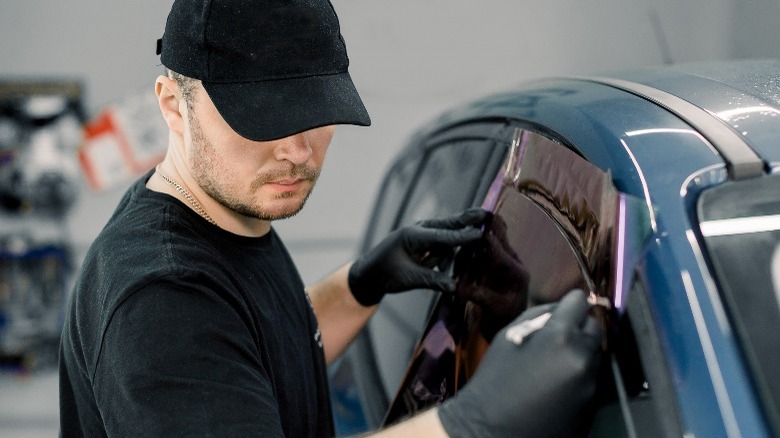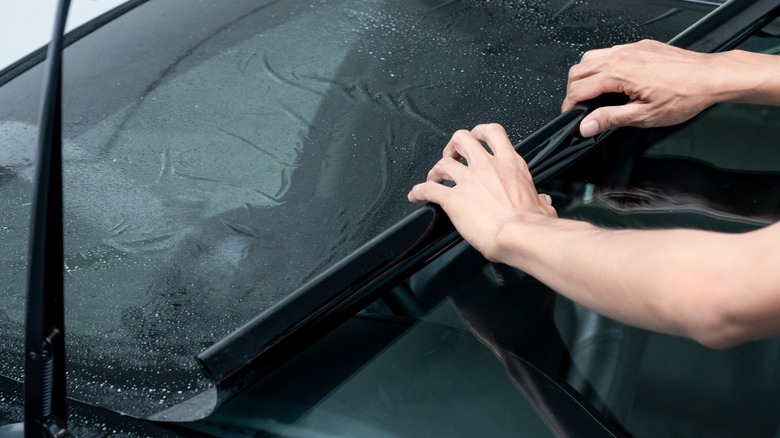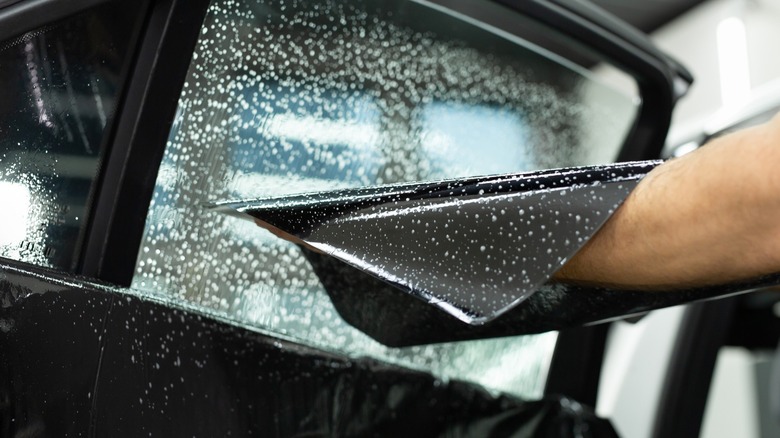
There are many reasons why someone may want to tint their vehicle’s windows: it helps to keep the interior of the car cool during those hot sunny days; it can protect the interior from excessive sun damage by blocking some of the UV rays trying to get in; plus, many people appreciate the privacy tint offers them and the way it makes their car look. In all, it’s an easy way to upgrade your vehicle, as long as you don’t go too dark with the tint due to state regulations.
Products are available — click below to view them!
SEE DETAILSThere are two ways that you can put tint on your vehicle’s windows: doing it yourself (DIY) or having it done by a professional. Like anything else, both ways offer benefits and downsides to consider, including cost, time, and skill. In this article, you’ll learn about the differences between DIY and professional window tinting so you can choose which direction you may want to take with your own vehicle.
What is DIY window tinting?

DIY window tinting means that you have taken on the task of trying to install tint on your vehicle by yourself. The good news is that windowing tinting at home is low-risk — however, if it’s not done specifically to the instructions that come with the product, you may find yourself looking up how to remove the window tint you just applied.
It’s easy to find window tint for a DIY project. You can look on Amazon, Walmart, and at auto parts stores. The most important detail is to make sure to buy the correct percentage of tint you want and that is allowed in your state. Other than that, you’ll need a spray bottle of soapy water, a squeegee, a utility knife, and an easy-to-use heat gun. Just be careful when applying the tint yourself; you’ll have to precisely cut the tint with a knife, and you don’t want to slip and ruin the tint or cut yourself.
What is professional window tinting?

Professional window tinting takes the stress out of applying the tint yourself by having a professional do it instead. An expert will not only already have the necessary tools and access to all types of window tint, but they will also have the proper space to perform the job, as window tinting requires a debris-free area. If you live in a windy region and don’t have a garage, it may be wiser and more cost-efficient for you to seek out a professional’s help instead of going the DIY route.
If you go to a reputable business, more than likely the tint the business uses will be of good quality and they’ll be obligated to fix any mistakes they make. You can always search for companies in your area that specialize in tinting windows or even look up your vehicle’s dealership. It’s always important to check out reviews from customers, though. You don’t want to end up with a bad tint job after spending the extra money to have someone else do it.
Price comparison

It is impossible to give a precise price point for both DIY and professional tinting because several factors go into it — the type of vehicle you own, the size of the windows, the percentage of the window tint, and the window tint brand are just a few of the elements. Additionally, if you are going to a professional, the pricing varies based on the shop’s location. However, you can get general estimates to give you an idea of what to expect.
According to the window tint company Rayno, professionally tinted SUVs tend to be pricier than sedans and coupes because the windows are bigger. For a more affordable carbon tint, SUVs typically run somewhere between $250 and $750, while sedans will run around $250. Of course, the higher the quality of the tint, the more expensive it will be.
For DIY window tinting, there are a wide variety of brands and prices on the market; they can run anywhere from $0.81 to $1.50 or beyond per square foot, and that’s just for the tint — you’ll still need the application tools. You could buy a kit, though, which will come with the tools needed. For example, the HTVront window film kit is priced at $7.88 and includes the needed application tools, such as the razor blade and squeegee. Meanwhile, Gila’s basic limo black DIY window tint (NRS44) is priced at $13.99 for a 6.5-foot roll. Some kits contain pre-cut tinted film, but they tend to cost more, such as the $59.99 product from Napoax.










